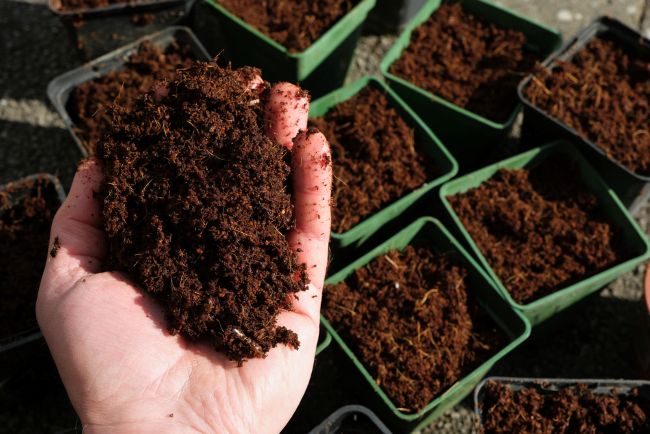How to Choose the Best Potting Mix for Your Plants

Good potting compost transforms gardens from unpleasant to thriving. It holds moisture, feeds plants, and gives roots room to grow. When you master the ideal mixture, your garden will teem with vitality.
Understand Your Flora’s Requirements
The choice of potting compost depends on the species you cultivate. Every variety has unique preferences regarding soil.
Peace lilies and spider plants need soil that’s moist but drains well. Succulents and aloe vera, on the other hand, prefer soil that drains quickly.
Before deciding on your compost, invest time in understanding your vegetation. To that end, you can always get gardening assistance from the experts. Local gardening services can give you all the information you need to set up a lovely orchard.
Seedlings and new cuttings thrive with nutrient-rich soil to support their initial development. Mature flora, however, benefit from a more stable, less nutrient-dense mixture. They favour blends that safeguard their established roots.
Know the Components of Potting Mix
Getting your potting mix right is crucial for thriving plants. Peat moss excels for moisture-lovers, keeping things perfectly humid. For cacti and drainage-needy plants, toss in perlite or vermiculite to boost airflow and dodge soggy roots.
The secret is matching your mix to what your plants need. Ferns generally do well with a 50-50 blend of peat moss and perlite. English lavender prefers extra perlite in the mix.
Always check labels carefully before buying. Stick with trustworthy brands that clearly list what’s in their products. This helps keep harmful stuff out of your garden.
When you understand what goes into your potting soil, your plants will be healthier, and you will save both time and money in the long run! Your landscape will flourish when you get the formula right.
Consider Organic vs. Synthetic Options
A potting compost with natural ingredients offers a planet-friendly approach to gardening. These mixtures contain decomposed materials that provide steady nourishment for strong root growth and better soil health.
Synthetic blends offer quick results but can deplete soil nutrients over time. Your selection between regenerative and artificial will depend on their impact and vegetation requirements.
Choose local, eco-friendly options at British garden centres to reduce transport emissions. Add native flora like foxgloves or primroses to boost diversity and attract wildlife.
Check for pH Balance
Soil pH affects nutrient absorption. Most plants thrive between 6.0 and 7.0 pH, but some need specific conditions.
Blueberries need acidic soil, pH 4.5-5.5. Others prefer alkaline soil. Get a pH testing kit to monitor your soil regularly.
Standard potting mixes work well for most vegetation, but checking acidity levels ensures optimal care. Yellow leaves or slow development often indicate pH problems. You can add calcium carbonate to raise pH values, or use sulphur to lower them.
Regular pH monitoring helps plants get the nutrients they need. Simple adjustments make gardening more enjoyable and successful. Ultimately, understanding this balance lets you give your flora exactly what it needs to reach its full potential.
Evaluate Drainage and Aeration
Finding the sweet spot between drainage and air circulation helps develop strong, healthy roots. Too much water leads to rot, while excessive air dries out the soil rapidly.
Test how moisture moves through your mixture before buying. You can do that by pouring some liquid in and watching how it drains. Look for a blend that maintains dampness without becoming waterlogged.
Choose potting formulations that contain chunky materials like bark pieces, perlite, or small stones. These create air pockets around the roots while preventing liquid from pooling. Getting this equilibrium right leads to robust root systems and thriving vegetation.
Read Labels and Certifications
Product descriptions offer valuable instructions when selecting potting mixes. Look for quality ingredients that match your gardening needs.
Organic certification guarantees freedom from synthetic chemicals, which is ideal for eco-conscious cultivation. Environmental markers indicate sustainable production methods.
Steer clear of blends containing harmful additives. Some compounds damage roots or leach into the surrounding earth. Support brands that openly share their constituents. Trustworthy manufacturers provide information about production techniques and sources.
Your chosen mixture should reflect both your values and vegetation requirements. Selecting certified, premium products supports plant health and environmental care. This approach ensures garden success while protecting our planet.
Consider Local Climate and Conditions
Weather significantly affects how the potting mix performs. Hot, dry spots mean plants get tons of sun, so you want a mix that traps moisture. Mix in peat moss or coconut coir to help the soil stay damp longer between waterings.
Meanwhile, in cooler, damper areas, focus on drainage instead. Adding perlite or sand creates pathways for excess water to escape, preventing root rot and fungal issues that thrive in constantly wet conditions. These types prevent waterlogged roots.
Different seasons bring changing requirements, so naturally, summer solutions differ from winter ones.
Indoor vegetation often struggles with dry air from heating systems, thus, moisture-retentive formulations work best. On the other hand, outdoor flora faces temperature and humidity changes, requiring adaptable growing media.
Understanding your local environment improves plant success rates dramatically. The right potting composition creates ideal growing conditions. This knowledge reduces maintenance time and effort.
Familiarity with regional weather patterns forms the foundation for successful gardening.
Test and Adjust Your Mix
Gardening involves experimenting to find what works best. Each specimen has unique preferences, so one formula won’t suit everything in your landscape. Try various combinations to discover the perfect blend.
Testing store-bought mixes and adjusting them for your plants makes sense. Add sand for drainage or peat for moisture retention. Watch how your plants respond, but be patient, as they need time to show results from soil changes.
Watch how your flora responds, but be patient as they take time to show results. Keep track of their progress and fine-tune the composition accordingly. This hands-on approach helps you learn what works best for your garden.
Remember that gardening involves constant learning. Your perfect blend will need adjusting as seasons change or when you add new vegetation.
Stay flexible and let your plants guide you towards creating the ideal growing environment. This leads to stronger, healthier development throughout your garden.
Consider Cost and Availability
Creating a successful garden starts with a reliable potting mixture. Whether you’re new to gardening or experienced, balance quality with budget constraints.
Buying from nearby suppliers cuts delivery costs and supports local businesses. For bigger projects, bulk purchases reduce expenses and packaging waste.
Cheap formulations seem tempting but often lack essential nutrients and moisture-retention properties. This creates growth problems later. Spending extra on quality blends gives you healthier flora and reduces the need for frequent replacements.
Think about long-term value when comparing prices. Focus on overall benefits rather than initial expenses.
Quality mixes protect plant vitality, prevent pest problems, and save money eventually. The right choice makes maintenance easier, brings satisfaction, and supports ongoing gardening success. The best part is that it doesn’t break the bank.
Conclusion
Choosing the appropriate potting mixture makes all the difference to plant health. Each variety needs specific care.
Thus, it’s imperative to understand their requirements, blend components, and local climate. Experimenting with different formulations helps create perfect growing conditions.
Taking time to find the right composition ensures fantastic development and simple maintenance. Your reward at the end is a beautiful, thriving garden.


